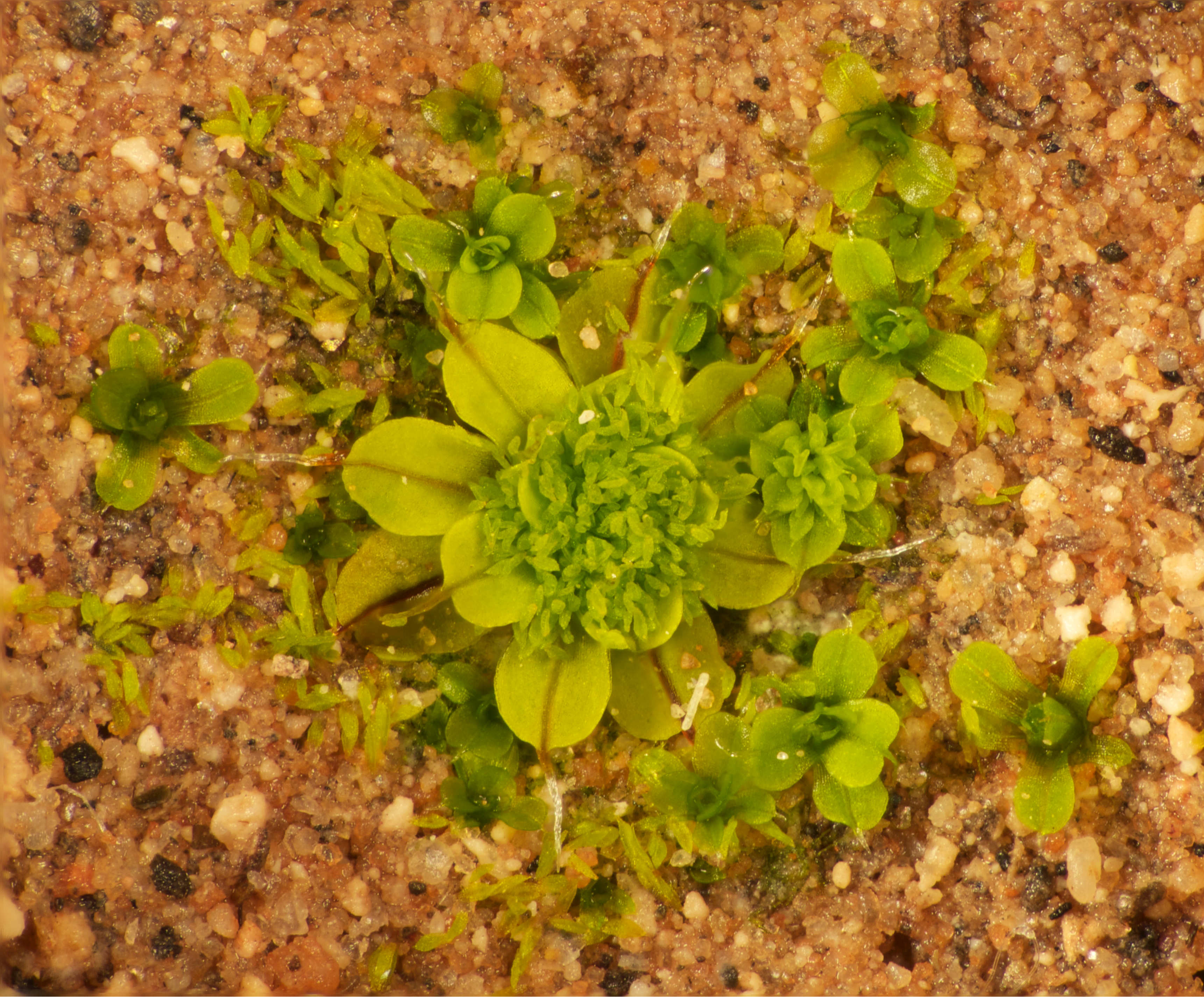Evolutionary Origins
 (https://bryophyte.cnps.org/)
(https://bryophyte.cnps.org/)
Evolutionary OriginsMosses are the second most diverse group of land plants and play an important ecological role in many terrestrial ecosystems. However, compared to vascular plants we understand little about the mechanisms that create and maintain biodiversity in this group. Since their early separation from other plants some 450 million years ago, mosses have taken a distinctly different path to solving the challenges posed by the terrestrial environment. Given that most of our knowledge of plant biodiversity is based on the vascular plant model, the study of mosses offers the possibility of unanticipated discoveries including mechanisms previously hidden from scientific inquiry.
Unique Adaptations to Aridity
Both the water relations and reproductive biology of mosses are very different from vascular plants and represent radically divergent strategies for surviving desiccation stress. In mosses, all tissues equilibrate their water content with ambient relative humidity (a condition known as poikilohydry), and quickly resume metabolic activity upon reintroduction of water (Alpert & Oliver 2002; Koster et al. 2010). While vascular plants have evolved physiological adaptations that prevent water loss, mosses have evolved adaptations that allow them to tolerate water loss. Their ability to survive the equilibration of cellular water potential with that of the surrounding air is called physiological desiccation tolerance (DT), and is necessary to maintain a poikilohydric lifestyle (example in the video below).
Reproduction
The unique reproductive biology of mosses involves reconciling water stress as well. Mosses retain the swimming sperm of their aquatic ancestors, a trait that reduces cross-fertilization in drier habitats in which precipitation is rare (Stark 1983).
(Video by Paul Wilson, https://www.youtube.com/channel/UCCMz8Fv0kBPsYxpVk2TrPaw<strong>)</strong>
[Video of swimming sperm coming soon!]
Many mosses mitigate the effects of reduced sexual reproduction in dry environments by increasing asexual reproduction. Mosses accomplish this through a diverse set of asexual (i.e. self-cloning) strategies that include specialized propagules and leaf fragmentation (Mishler 1990; Glime 2007).
Life history tradeoffs involving desiccation tolerance and reproductive strategy may be critical to the fate of these plants and the resiliency of their communities in the face of future climate change. Our Dimensions project will shed light on this hypothesis and contribute towards a vulnerability assessment for the fate of arid land mosses in a changing climate.

Colonizing Arid Environments
The evolution of high levels of both DT and asexual reproduction has allowed mosses to colonize arid and semi-arid environments throughout the world. In these environments mosses often contribute to the formation and stabilization of biological soil crusts (biocrusts). Biocrusts perform many critical ecological functions such as soil building and nutrient retention (Belnap 2002).

Dry Land Mosses have a Legacy worth Exploring
Despite these constraints imposed by their biology, mosses have:
(1) colonized semi-arid and arid environments across the globe,
(2) pushed the limits of drying without dying in their vegetative tissues,
(3) increased in diversity as measured by numbers of species, and
(4) increased the breadth of their occupied ecological space.
Despite this legacy, we know surprisingly little about the drivers of their biodiversity, a story that must be intimately linked to water relations and modes of reproduction!